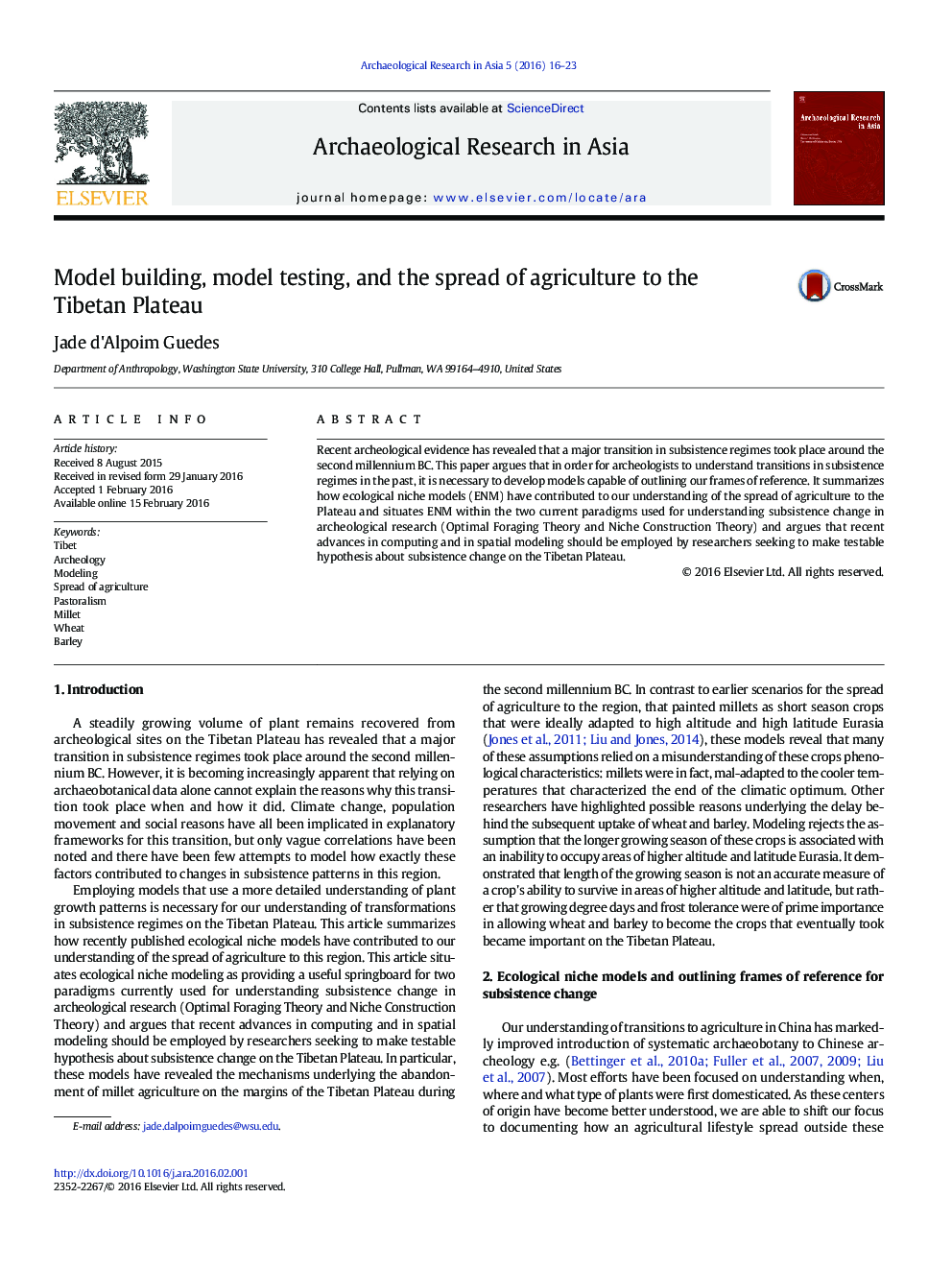| Article ID | Journal | Published Year | Pages | File Type |
|---|---|---|---|---|
| 1034153 | Archaeological Research in Asia | 2016 | 8 Pages |
Recent archeological evidence has revealed that a major transition in subsistence regimes took place around the second millennium BC. This paper argues that in order for archeologists to understand transitions in subsistence regimes in the past, it is necessary to develop models capable of outlining our frames of reference. It summarizes how ecological niche models (ENM) have contributed to our understanding of the spread of agriculture to the Plateau and situates ENM within the two current paradigms used for understanding subsistence change in archeological research (Optimal Foraging Theory and Niche Construction Theory) and argues that recent advances in computing and in spatial modeling should be employed by researchers seeking to make testable hypothesis about subsistence change on the Tibetan Plateau.
